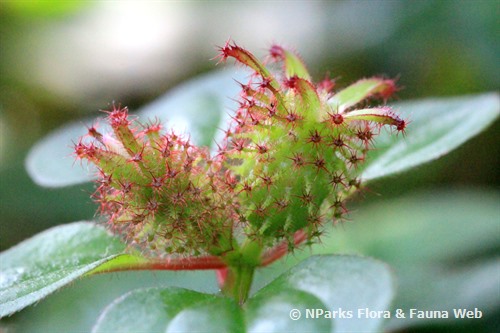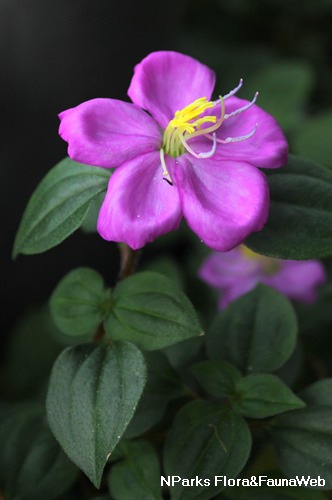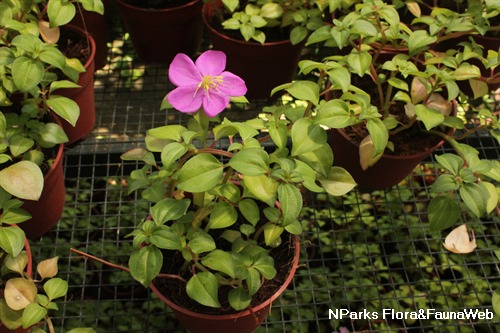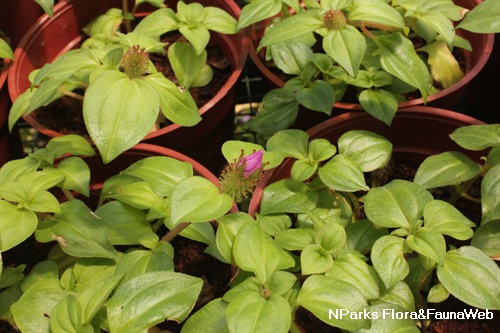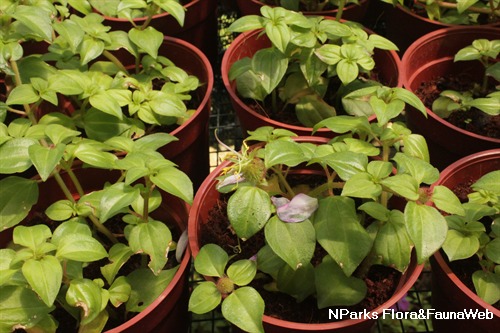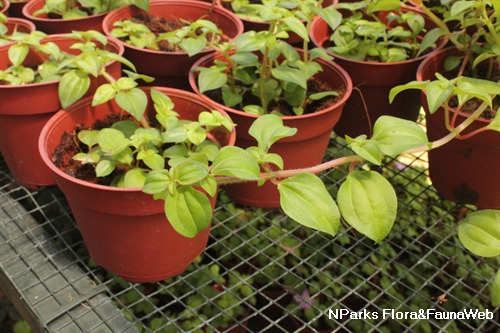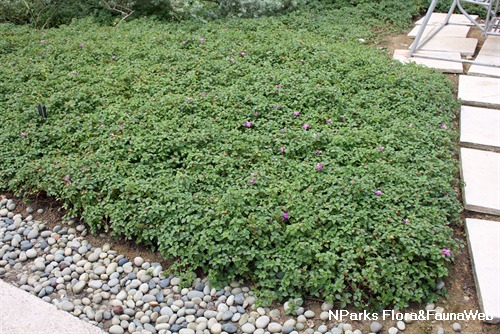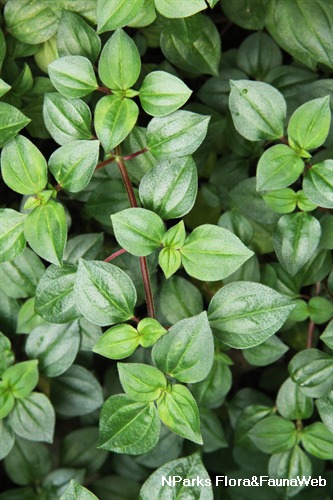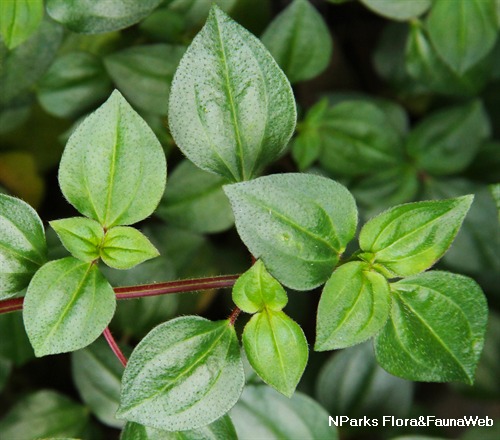
Back
Heterotis rotundifolia (Sm.) Jacq.-Fél.
| Family Name: | Melastomataceae |
| Synonyms: | Dissotis plumosa, Dissotis rotundifolia (Sm.) Triana |
| Common Name: | Spanish Shawl, Pinklady, Trailing Dissotis |
Name
Classifications and Characteristics
| Plant Division | Angiosperms (Flowering Seed Plants) (Dicotyledon) |
|---|---|
| Plant Growth Form | Herbaceous Plant, Creeper |
| Lifespan (in Singapore) | Perennial |
| Mode of Nutrition | Autotrophic |
| Plant Shape | Shrubby |
| Maximum Height | 0.3 m |
Biogeography
| Native Distribution | Tropical West Africa |
|---|---|
| Native Habitat | Terrestrial (Secondary Rainforest, Riverine) |
| Preferred Climate Zone | Tropical |
Description and Ethnobotany
| Others - Plant Morphology | Creeping herbaceous groundcover, slightly scandent, 0.15-0.30m height. Leaves opposite, bristly hairy on both sides, 3 prominenty-depressed veins on top. Stems hairy, rooting at nodes.Flowers magenta pink, 4cm across, 5 petals, scattered flowering, solitary or in few-flowered clusters. Fruit ovoid to ellipsoidal, covered by bristly hairs.Suitable as ornamental groundcover for borders, or trailing plant in hanging baskets. Trim regularly to maintain shape. When grown as groundcover, may become bare beneath dense foliage cover.Used in Africa to treat intestinal problems and expel worms. |
|---|---|
| Ethnobotanical Uses | Food (Herb or Spice) Others: Used in Africia to treat intestinal problems and expel intestinal worms. |
Landscaping Features
| Desirable Plant Features | Ornamental Flowers |
|---|---|
| Landscape Uses | General, Flowerbed / Border, Suitable for Hanging Baskets, Container Planting, Interiorscape/ Indoor Plant |
| Thematic Landscaping | Naturalistic Garden |
Plant Care and Propagation
| Light Preference | Semi-Shade, Full Sun |
|---|---|
| Water Preference | Moderate Water |
| Plant Growth Rate | Fast |
| Rootzone Tolerance | Well-Drained Soils, Easy to Grow |
| Maintenance Requirements | Moderate |
| Pruning | Prune regularly to maintain shape and reduce bareness below dense foliage cover. |
| Propagation Method | Seed, Stem Cutting, Stolon / Runner |
| Planting Distance | 0 |
Foliar
| Foliage Retention | Evergreen |
|---|---|
| Mature Foliage Colour(s) | Green |
| Mature Foliage Texture(s) | Velvety / Furry / Tomentose, Hairy / Hirsute |
| Foliar Type | Simple / Unifoliate |
| Foliar Arrangement Along Stem | Opposite |
| Foliar Shape(s) | Non-Palm Foliage (Ovate, Lanceolate) |
| Foliar Venation | Pinnate / Net |
| Foliar Margin | Entire |
| Foliar Apex - Tip | Acute |
| Foliar Base | Truncate / Square |
| Typical Foliar Area | Microphyll ( 2.25cm2 - 20.25 cm2 ) |
| Leaf Area Index (LAI) for Green Plot Ratio | 4.5 (Shrub & Groundcover - Dicot) |
Non - Foliar and Storage
| Stem Type & Modification | Herbaceous |
|---|---|
| Root Type | Underground (Fibrous Root) |
Floral (Angiosperm)
| Flower & Plant Sexuality | Bisexual Flowers |
| Flower Colour(s) | Pink, Purple |
|---|---|
| Flower Symmetry | Radial |
| Flower Size - Remarks | 4cm across |
| Flowering Period | Free-Flowering |
| Flowering Opening Time | Time-Independent |
| Flowering Habit | Polycarpic |
Fruit, Seed and Spore
| Mature Fruit Colour(s) | Green, Red |
|---|---|
| Fruit Classification | Simple Fruit |
Image Repository
Others
| Master ID | 91 |
|---|---|
| Species ID | 1387 |
| Flora Disclaimer | The information in this website has been compiled from reliable sources, such as reference works on medicinal plants. It is not a substitute for medical advice or treatment and NParks does not purport to provide any medical advice. Readers should always consult his/her physician before using or consuming a plant for medicinal purposes. |

